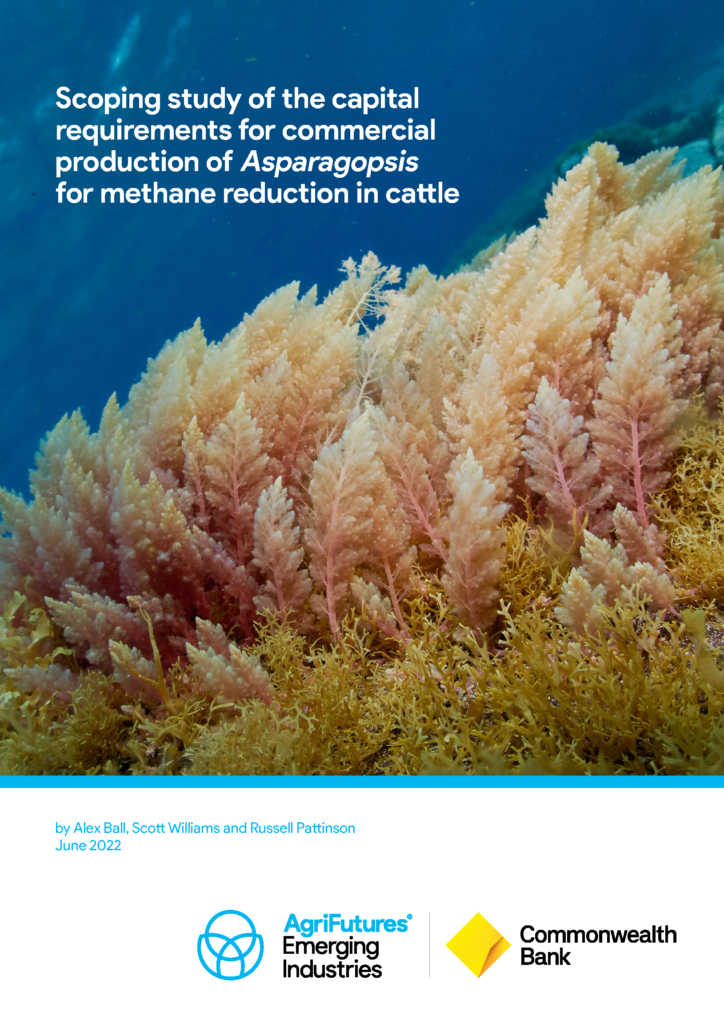Australian Seaweed Industry Blueprint - A Blueprint for Growth
Australia has the skill set to develop both seaweed cultivating and harvesting industries. But a key challenge is the development of commercially focused research, development...

24 pages
Published: 26 Sep 2022
Author(s): Alex Ball, Scott Williams, Russell Pattinson
ISBN: 978-1-76053-289-5
Download report PDF
DownloadPurchase a hard copy - AUD $50
As global citizens, we are continually encouraged to make sustainable changes that improve environmental outcomes while also boosting productivity. The Australian agriculture sector is highly mobilised around this challenge and none more so than the Australian red meat and livestock industry with its Carbon Neutral 2030 target and roadmap.
Methane emissions from the enteric fermentation of ruminant livestock is the largest source of greenhouse gas emissions in agriculture. Likewise, as custodians of more than half of Australia’s land use, agriculture will play an enormous role in sequestering carbon dioxide into landscapes.
Cattle make up a key segment of Australian agriculture and are our largest agricultural export. The sustainable development of the livestock industry is recognised as an important part of the solution to address the complex challenge of sustainable food production to feed a rising global population.
Asparagopsis spp. is a group of native red seaweeds which, when incorporated as an animal feed, reduce methanogenesis and could revolutionise the world’s approach to mitigating livestock emissions. Research into the effectiveness of Asparagopsis as a feed additive for cattle to reduce methane emissions is being keenly pursued. This report has been co-funded by AgriFutures Australia and the Commonwealth Bank to explore the potential capital required for commercialising large-scale Asparagopsis production in anticipation of successful research outcomes.
Commonwealth Bank is committed to the transition to net zero emissions by 2050 and is proud to support research that drives innovation by Australian farmers and the agricultural sector to develop new techniques in sustainable farming.
The ‘Scoping study of the capital requirements for commercial production of Asparagopsis for methane reduction in cattle’ has been produced as part of AgriFutures Australia’s Emerging Industries Program, which focuses on new and emerging industries with high growth potential. Emerging animal and plant industries play an important part in the Australian agricultural landscape. They contribute to the national economy and are key to meeting changing global food demands.